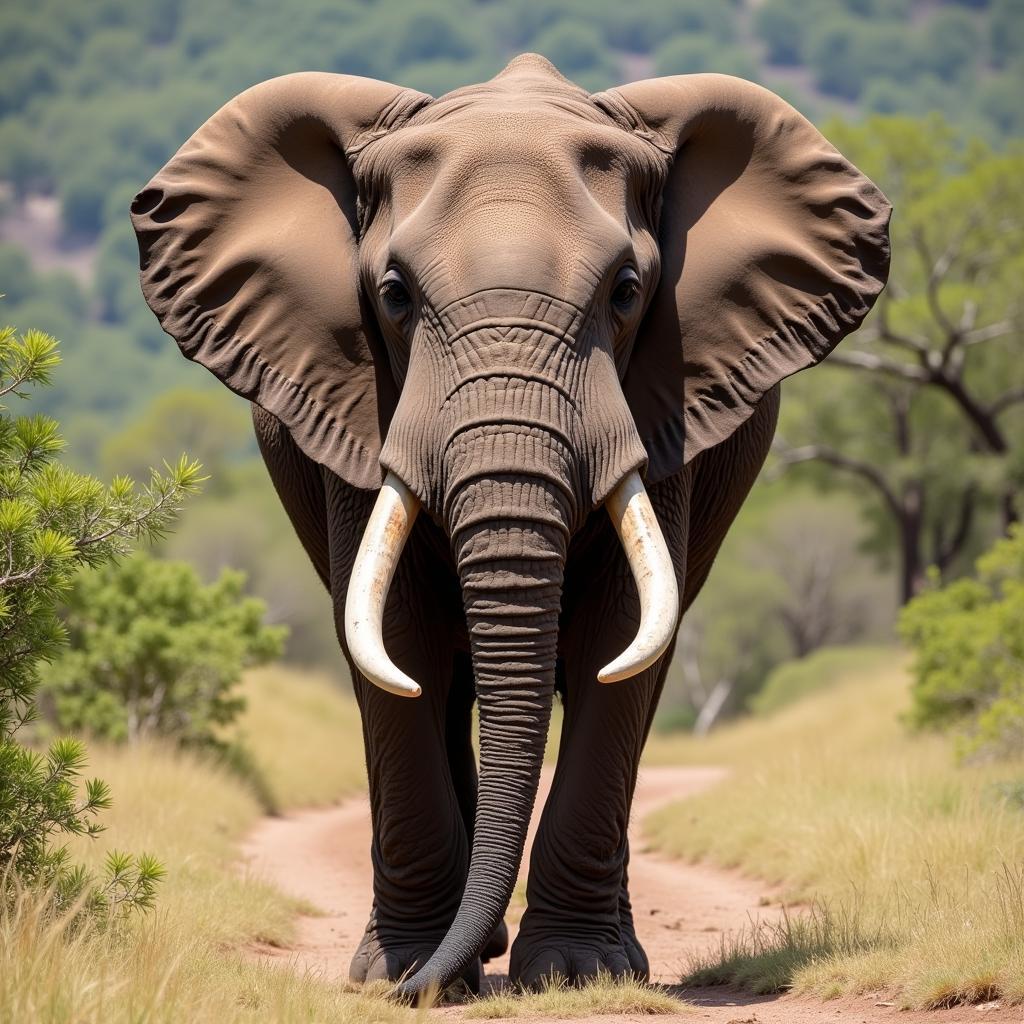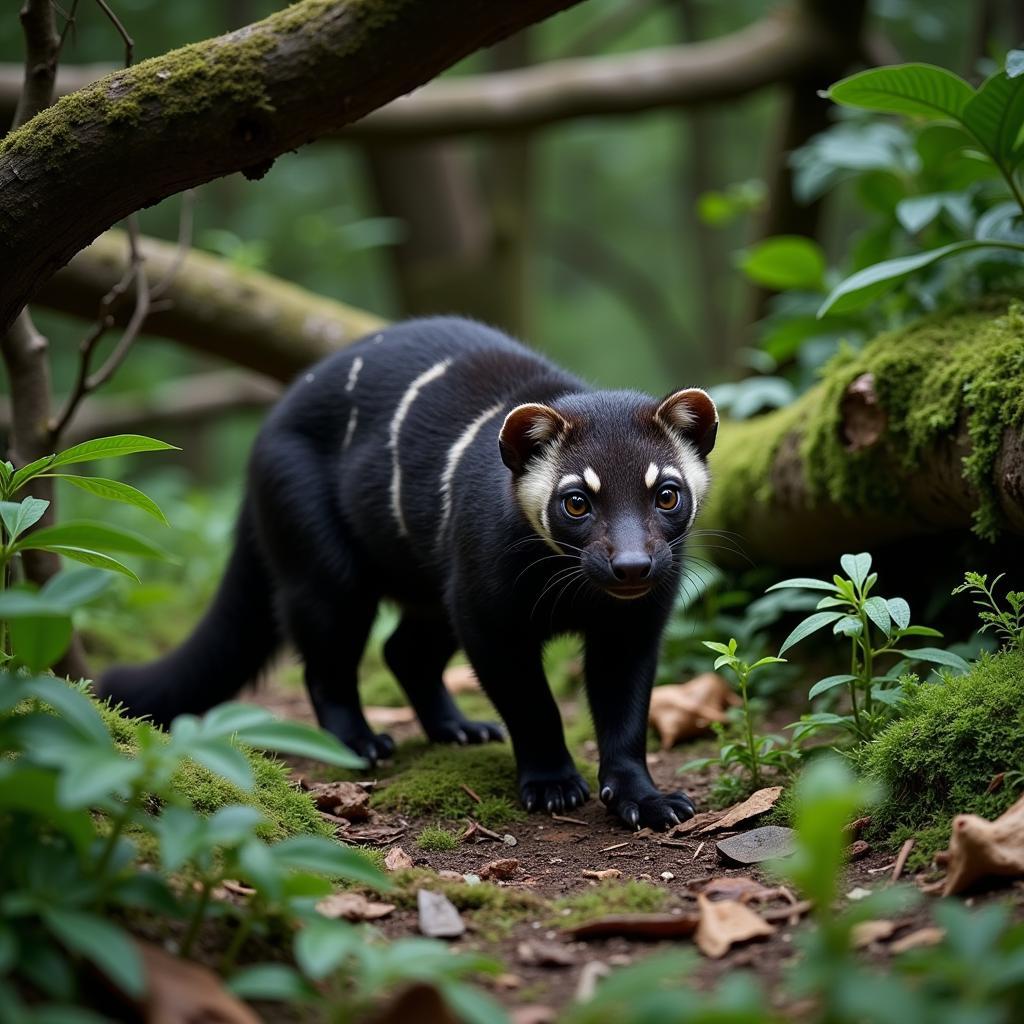Majestic African Bush Elephant Male Long Tusks
The African Bush Elephant Male Long Tusks are an iconic symbol of the African savanna. These magnificent ivory appendages are not just impressive to behold; they play a crucial role in the elephant’s survival and social hierarchy. But what makes these tusks so unique, and what threats do they face in the modern world? Let’s delve into the fascinating world of these gentle giants and their remarkable ivory.
The Significance of African Bush Elephant Male Long Tusks
Tusks are elongated incisor teeth that continue to grow throughout an elephant’s life. In males, these tusks can reach impressive lengths, sometimes exceeding 10 feet and weighing over 200 pounds. They are essential tools for survival, used for digging for water, stripping bark from trees for food, and digging up roots and minerals. The tusks also play a vital role in defense against predators and competing with other males for dominance and mating rights. The larger the tusks, the more dominant the male is perceived, increasing his chances of reproductive success.
What sets the African bush elephant apart from its Asian counterpart is the presence of tusks in both males and females. While Asian elephant females rarely have tusks, and if they do, they are usually small and barely visible, most African bush elephant females possess tusks, albeit generally smaller than those of the males. This difference is partly attributed to evolutionary pressures and environmental factors.
The Threat of Poaching and Ivory Trade
Sadly, these magnificent tusks have also become a source of great peril for African bush elephants. The illegal ivory trade has decimated elephant populations across Africa. Poachers target elephants specifically for their tusks, leaving behind a trail of carnage. The demand for ivory, particularly in Asian markets, fuels this cruel trade, driving these majestic creatures towards extinction. International efforts are underway to combat poaching and curb the demand for ivory, but the fight is far from over.
Conservation Efforts and the Future of African Bush Elephants
Numerous organizations and governments are working tirelessly to protect African bush elephants and their habitat. These efforts include anti-poaching patrols, community engagement, and raising awareness about the devastating impact of the ivory trade. The future of these gentle giants rests on our collective action to protect them and ensure their survival for generations to come. We need to support conservation initiatives and promote sustainable tourism that benefits local communities and elephant populations.
Learn more about the African bush elephant as one of the Big Five animals, compare the African adult bush elephant with the Indian adult elephant, and understand the fascinating African elephant body parts. Additionally, discover more about the African bush elephant’s teeth and the remarkable weight an African elephant tusk can reach.
 African Bush Elephant Male with Long Tusks in a Protected Area
African Bush Elephant Male with Long Tusks in a Protected Area
Conclusion: Protecting the Legacy of the African Bush Elephant Male Long Tusks
The African bush elephant male long tusks are a symbol of strength, resilience, and the incredible biodiversity of Africa. These magnificent creatures face numerous challenges, but with continued conservation efforts and global cooperation, we can secure their future and ensure that their iconic tusks continue to grace the African savanna for generations to come. The survival of the African bush elephant is not just an African issue, it’s a global responsibility.
FAQ
- What are elephant tusks made of? Elephant tusks are primarily made of dentine, the same material that forms human teeth.
- How fast do elephant tusks grow? Elephant tusks grow throughout their lives, at a rate of several inches per year.
- Why are elephant tusks so valuable? The ivory from elephant tusks is highly prized in some cultures, leading to the illegal ivory trade.
- What is being done to stop elephant poaching? Numerous organizations and governments are implementing anti-poaching measures, including patrols, community engagement, and stricter laws.
- How can I help protect African bush elephants? You can support conservation organizations, raise awareness about the ivory trade, and choose sustainable tourism options.
- What is the role of tusks in an elephant’s life? Tusks are used for digging, foraging, defense, and social displays.
- Are all African elephants the same? No, there are two distinct species: the African bush elephant and the African forest elephant.
Situations Involving Questions about African Bush Elephant Male Long Tusks
- Tourist observing an elephant: “Wow, those tusks are enormous! How much do they weigh?”
- Student researching elephants: “I need to find information on the impact of poaching on African bush elephant populations.”
- Conservationist discussing strategies: “We need to find more effective ways to protect elephants from poachers and the illegal ivory trade.”
Further Exploration
- Explore more about the African Bush Elephant and its inclusion in the Big Five animals: african bush elephant big five animals.
- Compare and contrast the African and Indian elephants: african adult bush elephant vs indian audlt elephant.
- Delve deeper into the intricate details of African elephant body parts: african elephant body parts.
- Learn more about what African bush elephant teeth are called: african bush elephant teeth are called.
- Discover the impressive weight of African elephant tusks: african elephant tusk weight.
For further assistance, please contact us:
Phone Number: +255768904061
Email: kaka.mag@gmail.com
Address: Mbarali DC Mawindi, Kangaga, Tanzania.
We have a 24/7 customer service team.



